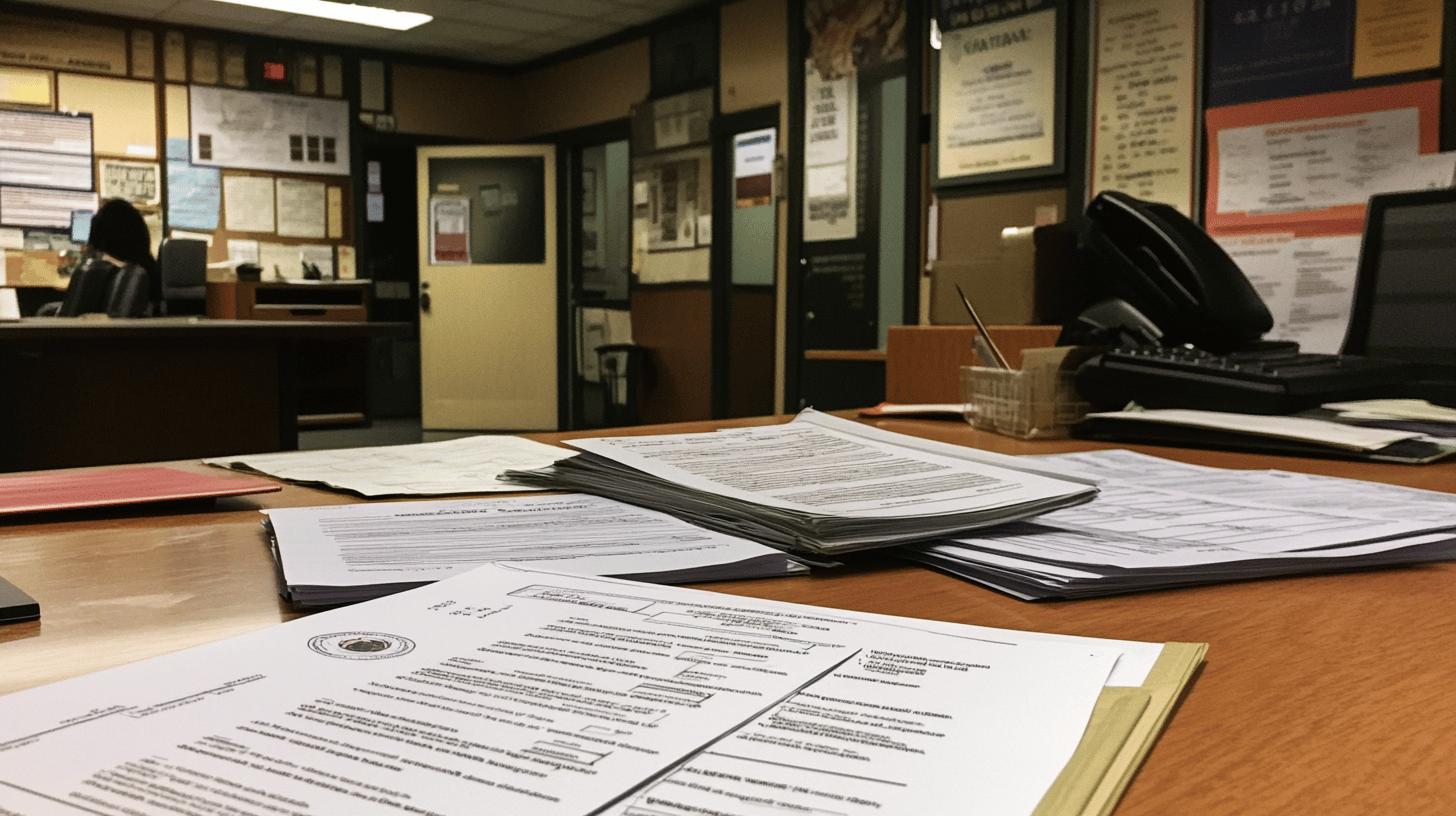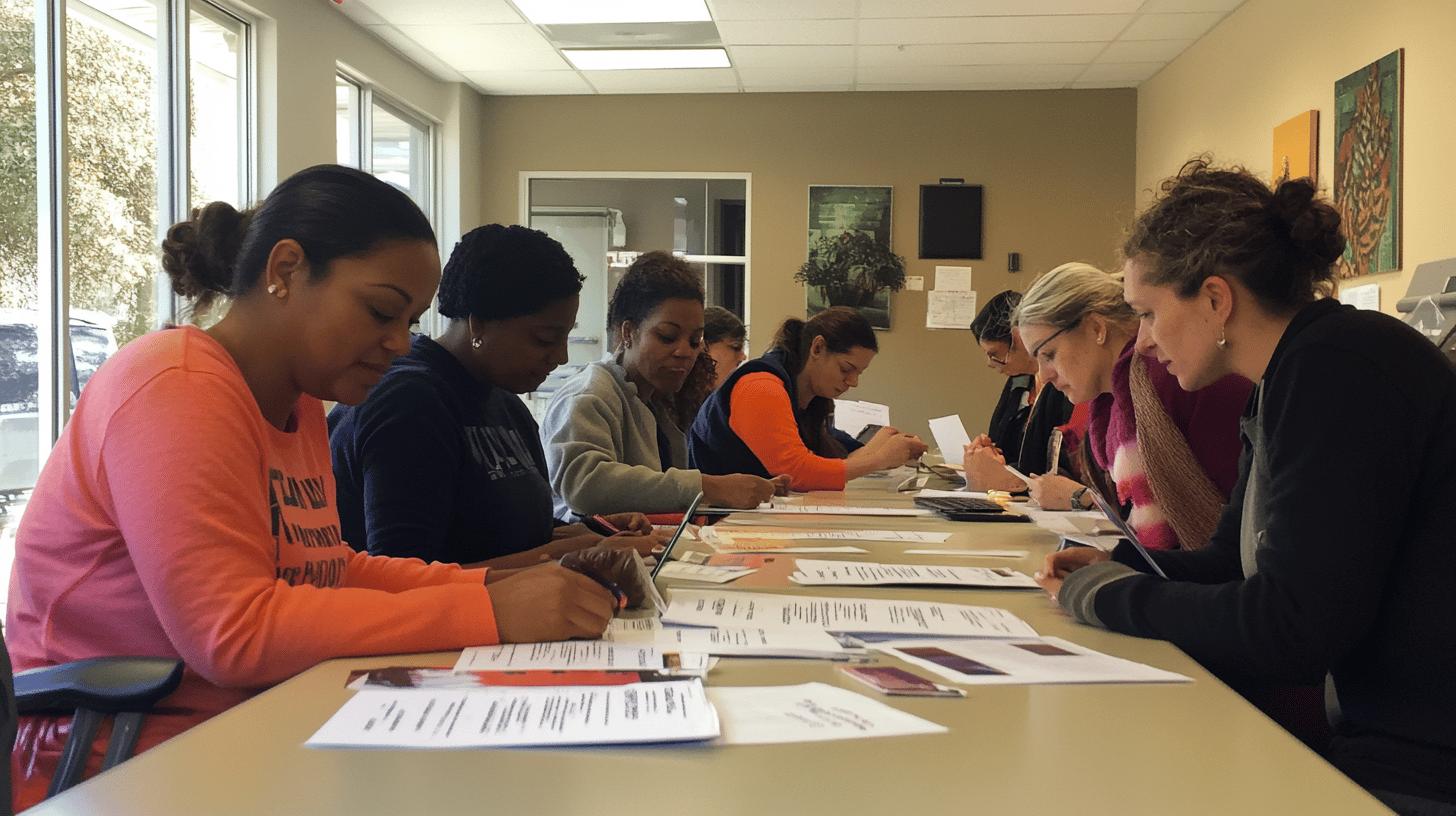The National Voter Registration Act of 1993, often called the Motor Voter Act, changed the landscape of federal elections by simplifying how Americans register to vote.
This landmark legislation aims to expand democratic participation by making voter registration more accessible than ever before. As more eligible citizens find themselves on voter rolls, the effects on turnout are undeniable. Understanding this Act will reveal how it boosts participation and strengthens the voice of democracy in the United States.
Table of Contents
So what is the National Voter Registration Act?
The National Voter Registration Act of 1993 (NVRA or the Motor Voter Act) was a landmark federal legislation aimed at increasing voter participation in the United States. Enacted to streamline the voter registration process, its primary goal was to boost the number of eligible citizens registered to vote in federal elections. By making voter registration more accessible, the NVRA sought to enhance democratic participation across the nation.
Key components of the NVRA include provisions that simplify voter registration. The Act requires states to offer registration opportunities at the same time as applying for or renewing a driver’s license. It also mandates that public agencies, including those providing public assistance and services to persons with disabilities, offer voter registration services. These measures, along with mail-in voter registration options, are designed to make the process as straightforward as possible for all eligible voters.
The significance of the NVRA lies in its impact on voter accessibility and participation. By removing barriers to registration, the Act has played a crucial role in ensuring that more citizens can exercise their right to vote. These provisions have been particularly important for underrepresented groups, who may face challenges in accessing traditional voter registration avenues. Through its comprehensive approach, the NVRA continues to support a more inclusive electoral process.
Why was the NVRA Enacted
- Low voter turnout: In 1988, the United States experienced its lowest voter turnout in 40 years during the presidential election between George H.W. Bush and Michael Dukakis. This dismally low turnout was a major factor that prompted Congress to take action.
- Registration barriers: Before the NVRA, there were more barriers to voter registration, which contributed to lower registration rates and, consequently, lower turnout. Approximately 25% of the population was not registered to vote prior to the implementation of motor voter laws.
- Inconsistent registration processes: The registration process varied significantly across states, often making it more difficult for citizens to register and vote, especially when moving between states or jurisdictions.
- Purging of voter rolls: Prior to the NVRA, many states had aggressive policies for removing voters from registration lists, sometimes purging individuals for simple clerical errors or failure to vote in a single election.
- Limited registration options: Before the NVRA, many states did not offer mail-in registration or registration at government agencies like the DMV, making it less convenient for citizens to register
Key Parts of the NVRA

The NVRA establishes essential voter registration requirements by mandating that states provide registration services at public agencies. These include agencies that offer public assistance and services to persons with disabilities. By integrating voter registration into these services, the NVRA ensures that individuals who may not have easy access to traditional registration methods are given the opportunity to register to vote. This integration is a critical step in promoting voting accessibility and simplifying the registration process for all eligible citizens.
Here are the primary methods of voter registration under the NVRA:
- Motor Vehicle Agency Registration: The NVRA required states to offer voter registration opportunities at state motor vehicle agencies. This meant that when people applied for or renewed their driver’s licenses, they would also be offered the chance to register to vote3.
- Mail-in Registration: The Act mandated that states accept voter registrations by mail, using forms developed by each state and the Election Assistance Commission4.
- Public Assistance and Disability Service Office Registration: States were required to offer voter registration at offices providing public assistance or state-funded programs primarily serving people with disabilities3.
- Voter List Maintenance: The NVRA established requirements for maintaining accurate and current voter registration lists, including specific procedures for removing voters from the rolls4.
- National Mail Voter Registration Form: The Act implemented a federal form for voter registration, which all covered states must accept and use1.
- “Fail-safe” Voting: The NVRA provided safeguards allowing registered voters who have moved within their electoral district to vote at their old polling place, even if they haven’t re-registered at their new address4.
- Restrictions on Voter Purges: The Act placed limitations on how and when states could remove voters from registration lists, including a prohibition on removing voters for non-voting without following specific procedures4.
- Notification Requirements: States were required to notify applicants whether their voter registration applications were accepted or rejected4.
- Extended Registration Deadline: While the NVRA set a minimum standard of accepting registrations up to 30 days before an election, some states like California implemented even more generous deadlines (15 days in California’s case)2.
- Uniform Registration Processes: The Act standardized many aspects of the voter registration process across covered states, making it more consistent nationwide
Implementation and Compliance Challenges
After the National Voter Registration Act (NVRA) was enacted, many states faced challenges in complying with its requirements. Several states questioned the constitutionality of the Act, leading to legal battles. The Department of Justice intervened to enforce compliance, filing lawsuits to uphold the NVRA’s provisions. These legal challenges highlighted the resistance some states had in standardizing voter registration processes, which the NVRA aimed to simplify and unify across the nation.
Here is a table illustrating varying levels of compliance among different states:
| State | Compliance Status |
|---|---|
| California | Fully Compliant |
| Texas | Partial Compliance |
| Mississippi | Challenged the NVRA |
| Georgia | Initially Non-compliant |
| New York | Fully Compliant |
These compliance challenges prompted significant changes in how states manage voter registration. The NVRA’s legal hurdles forced states to address discrepancies in their registration processes, leading to more uniform standards nationwide.
By standardizing these processes, the NVRA played a crucial role in enhancing election participation and ensuring that voter registration forms and procedures are accessible to all eligible citizens. This evolution in state practices continues to support a more inclusive and democratic voting system.
Impact on Voter Registration and Participation

The National Voter Registration Act (NVRA) has played an important role in increasing voter turnout across the United States. By simplifying and standardizing voter registration processes, the NVRA has made it easier for eligible voters to register. Statistical data reveals that since its enactment, there has been a noticeable rise in the number of registered voters (registered voters doesn’t equal voter turnout).
According to reports, millions of new voters have been added to the rolls, contributing to higher participation in federal elections. This increase highlights the proposed effectiveness of the Act in broadening democratic engagement and ensuring that more citizens can exercise their right to vote.
One of the NVRA’s significant achievements is the improvement in the accuracy of voter registration lists. The Act mandates the maintenance of these lists, which helps prevent inaccuracies and fraudulent entries. By requiring regular updates and checks, the NVRA has fostered a more reliable voter registration system.
This is meant to ensure voter rolls are clean and current, reducing the likelihood of errors during elections. Accurate lists are crucial for the integrity of the electoral process, as they ensure that only eligible voters can cast their ballots, thus boosting public confidence in election outcomes.
The NVRA’s requirement for biennial reports to Congress has also been instrumental in refining election procedures. These reports assess the Act’s impact on federal elections and suggest necessary improvements. This ongoing evaluation process has led to continuous enhancements in how elections are conducted.
Though these improvements have shown promise after the NVRA was enacted, the translation to actual voter turnout has diminished over the years. Critics argue that the act was built around the office of the 1990s and is not fit for modern day.
Legal and Political Implications of the NVRA
The National Voter Registration Act (NVRA) has faced significant legal challenges since its enactment, primarily from states questioning its constitutionality. The Department of Justice has defended the NVRA by filing lawsuits to ensure states comply with its mandates. These legal defenses underscore the Act’s importance in standardizing voter registration processes across the nation. The NVRA’s enforcement has played a crucial role in maintaining voter registration integrity, enhancing election law by creating a uniform framework that states must follow.
Here are four key political debates surrounding the NVRA:
- State vs. Federal Authority: Should the federal government mandate state election procedures?
- Voter ID Laws: Since the NVRA doesn’t cover voter ID requirements, how do these laws interact with the NVRA’s accessibility goals?
- Election Security: Does the NVRA’s approach compromise or enhance election security?
- Voter Fraud Concerns: Are the NVRA’s provisions sufficient to prevent voter fraud?
The NVRA interacts with other voting laws, like the Help America Vote Act, to create a comprehensive voter registration system. By aligning with these statutes, the NVRA enhances election law by ensuring all eligible citizens can register and vote without undue barriers. This collaboration between laws supports a more inclusive electoral process, addressing both accessibility and security concerns. The NVRA’s influence extends beyond registration, shaping the legal landscape to accommodate evolving voting rights challenges while maintaining the integrity of election procedures.
Final Words
The National Voter Registration Act helped simplify the registration process and make voting more accessible. By establishing key provisions like registration opportunities at public agencies and mail-in options, NVRA has increased voter participation.
While state compliance presented initial challenges, the Act has steadily increased voter registrations across the 50 states. Its legal and political implications continue to shape the landscape of election laws.
Overall, the National Voter Registration Act has significantly contributed to growing voter turnout and ensuring a more inclusive democratic process.
FAQ
What did the National Voter Registration Act do?
The National Voter Registration Act of 1993, also known as the NVRA, was designed to simplify the voter registration process. It required states to offer voter registration when applying for or renewing a driver’s license and through mail-in applications.
What is the purpose of the National Voter Registration Act?
The purpose of the National Voter Registration Act is to increase voter registration among eligible citizens and enhance voting opportunities by streamlining the registration process at public agencies offering driver’s license and other services.
What effect did the National Voter Registration Act have on voter registration?
The National Voter Registration Act is reported to have increased the number of registered voters. It facilitated the process through easier access and standardized registration methods, improving voter participation across federal elections.
What are the key provisions of the National Voter Registration Act?
Key provisions of the NVRA include mandatory voter registration services at public agencies, voter registration opportunities during driver’s license applications or renewals, and mail-in voter registration options to ensure accessibility.
What challenges have states faced with NVRA compliance?
States initially faced compliance challenges with the NVRA, including legal opposition and delays. Some were noncompliant, prompting federal enforcement actions to ensure adherence to registration standards.
How has the NVRA impacted voter registration and participation?
The NVRA has increased voter registration numbers, enhanced voter list integrity, and improved election procedures by requiring regular reports to Congress for ongoing evaluation and improvements.
What are the legal and political implications of the NVRA?
The NVRA has influenced legal and political debates surrounding voter registration, leading to challenges and defenses. It interacts with other voting laws to shape and ensure comprehensive election processes.
- The Right Gear for Upland Hunting - December 21, 2024
- How to Get a Suppressor in a Few Steps - December 5, 2024
- What is The Protection of Lawful Commerce in Arms Act? - November 15, 2024




